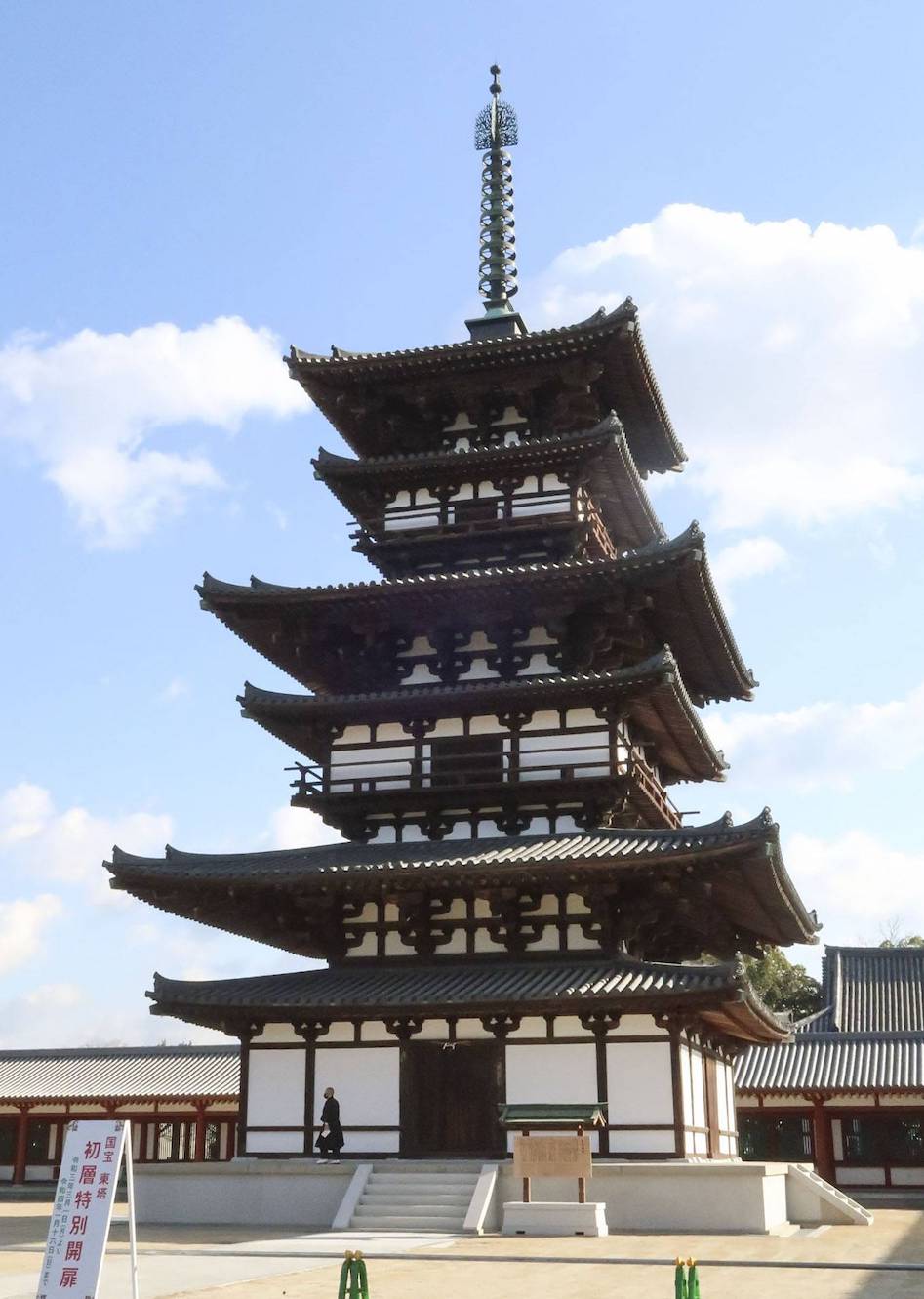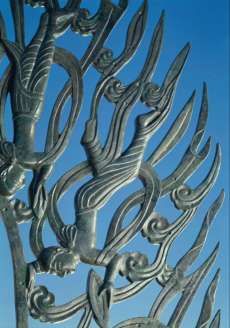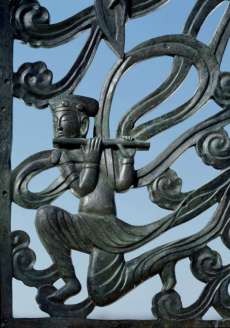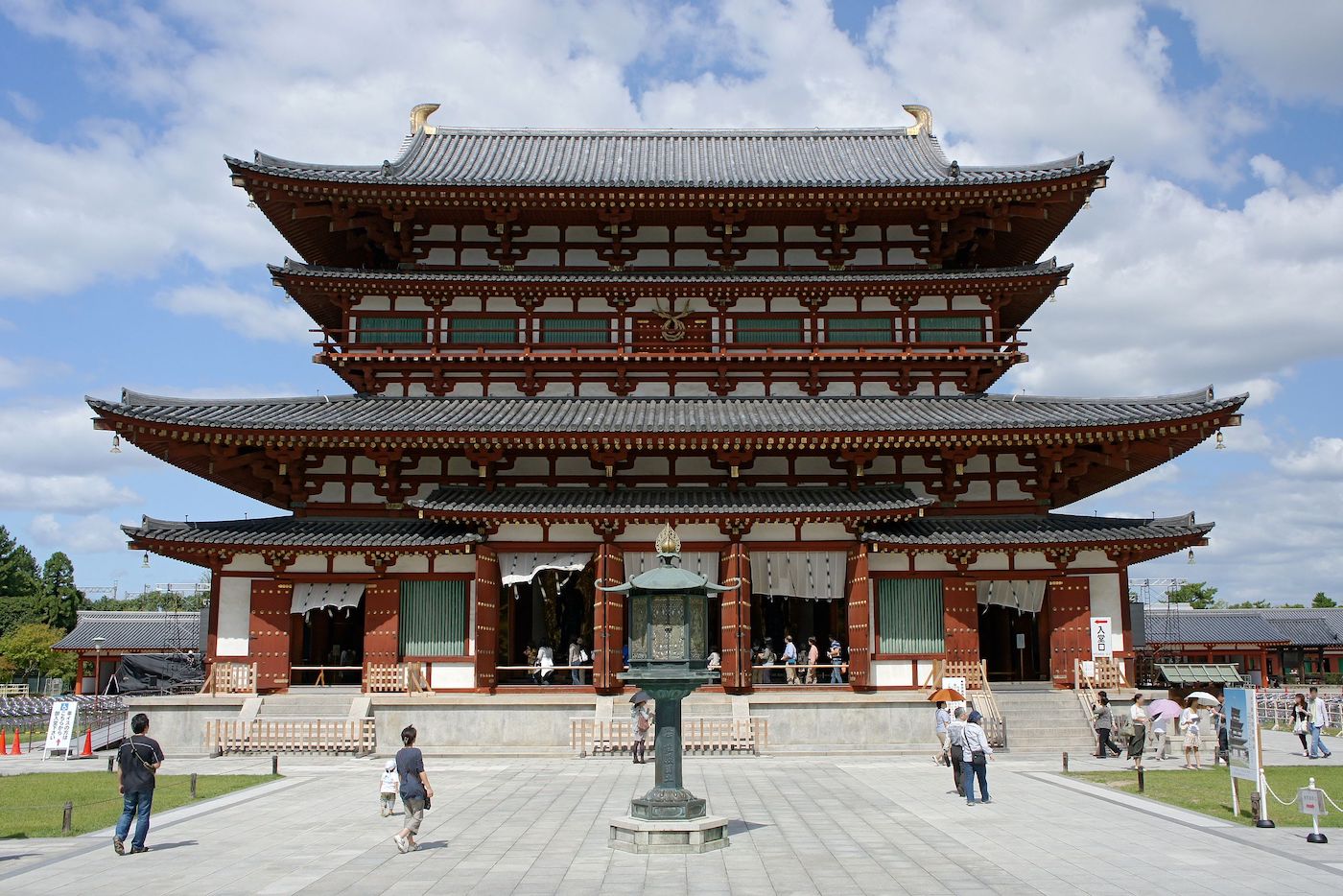NEWS
Japan to Open Ancient Buddhist Pagoda to the Public for the First Time in a Decade

The East Pagoda of Yakushi-ji in Nara has undergone its first
major renovation in over 100 years. From japantimes.co.jp
Yakushi-ji, a Buddhist Temple in the former Japanese capital Nara, plans to offer the public access to its ancient East Pagoda for the first time in over 10 years, following the conclusion of the first major restoration program for the historic monument in more than a century.
The 1,300-year-old, three-tiered East Pagoda will be partially opened to the public from March through to 16 January next year, during which visitors to the historic monument, designated a national treasure by the Japanese government, will be allowed onto a platform around the pagoda’s entrance, from which they will be able to view the tower’s central pillar and ornate ceiling. The interior of the monument will remain off-limits for the time being, according to media reports.
Yakushi-ji, established in 680 CE by Emperor Tenmu (673–86) to make merit for the recovery of his consort (later Empress Jito) from sickness, is one of the seven great temples of Nara and the head temple of the Hosso school of Japanese Yogacara Buddhism, one of Japan’s oldest Buddhist orders. The temple is also included among the eight sites that make up Historic Monuments of Ancient Nara, a UNESCO World Heritage Site. Although much of the temple complex was destroyed by fire in 973, and the main hall was razed in 1528, the entire temple has since been completely restored.
The renovated 33.6-meter-high East Pagoda (東塔, Tō-tō), constructed in 730, is the only wooden structure in the entire complex to have survived since the temple’s founding more than 1,300 years ago. A major renovation program was undertaken from 2009–19, the first in some 110 years to restore the entire structure. The monument was expected to open to public visitors from May last year, but the plan was suspended due to the outbreak of the COVID-19 pandemic.
 The pagoda’s bronze finial features celestial figures dancing and playing flutes. From yakushiji.or.jp
The pagoda’s bronze finial features celestial figures dancing and playing flutes. From yakushiji.or.jp The pagoda’s bronze finial features celestial figures dancing and playing flutes. From yakushiji.or.jp
The pagoda’s bronze finial features celestial figures dancing and playing flutes. From yakushiji.or.jpRanked as one of the finest pagodas in Japan, the East Pagoda is a three-story structure, however three smaller, alternating inter-storey pent roofs—a cutting-edge construction technique at the time—give the tower the appearance of six levels. The unique aesthetic rhythm of the interweaving roof structure and the architectural balance of the pagoda prompted the American historian of Japanese art and Tokyo Imperial University professor Ernest Fenollosa (1853–1908) to describe the pagoda as “frozen music.” (Yakushiji Temple)
The pagoda’s crowning bronze finial includes a water flame design, depicting celestial figures dancing and playing flutes, and is believed offer the building protection from fire.
The temple reportedly moved to open the pagoda to the public this year in response to requests from Buddhists to be able to pray there. “The renovation has been completed thanks to the help of many people,” said Kitatsu Ikoma, Yakushi-ji’s vice chief priest. “We want the public to see it.” (The Japan Times)
The city of Nara was a former capital of Japan and the seat of the emperor during the Nara period from 710–94, before the capital was moved to Kyoto and later to Tokyo. Nara is home to a number of historic Buddhist temples, notable among them: Gangō-ji, completed in 593 CE; Kōfuku-ji, established in 669 CE; Saidai-ji, dated to 765 CE; Tōdai-ji, founded in 738 CE; and Tōshōdai-ji, dated to 759 CE.

The main hall of Yakushi-ji. Photo by 663highland. From wikipedia.org
The two most widespread religious traditions in Japan are Buddhism and Shinto, with 69 per cent of the population identifying as practicing Shinto and 66.7 per cent identifying as Buddhist practitioners, indicating a high level of overlap between the two traditions. Christians represent 1.5 per cent of the population, while other religions make up a combined 6.2 per cent, according to demographic data for 2018. The most popular schools of Buddhism in contemporary Japan are Nichiren, Pure Land, Shingon, and Zen.
See more
Yakushiji Temple
National-treasure Yakushiji pagoda in Nara to open to public from March (The Japan Times)
Yakushiji's national-treasure pagoda to open to public from March (Kyodo News)
Yakushiji temple to open its East Pagoda for first time in a decade (The Asahi Shimbun)
Related news from Buddhistdoor Global
Buddhist Temple in Tokyo Offers Vietnamese Workers Refuge from the Pandemic
Buddhist Funerals in Japan See Fewer Mourners and Delays in Response to the Coronavirus
Soka Gakkai President Calls for Support on Nuclear Disarmament and Youth Climate Action
1,600 Women Join 400-year-old Archery Tournament at Kyoto Buddhist Temple
Remains of Ninth Century Buddhist Pagoda and Hall Found at Site of Kyoto Temple
Related features from Buddhistdoor Global
Japanese Buddhism 101: The Search for the Buddha
Cosmic Contemplations: A Glimpse of Japan’s Rare Star Mandalas














